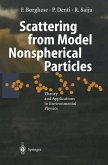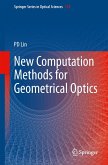This book gives a detailed overview of the theory of electromagnetic wave scattering on single, homogeneous, but nonspherical particles. Beside the systematically developed Green's function formalism of the first edition this second and enlarged edition contains additional material regarding group theoretical considerations for nonspherical particles with boundary symmetries, an iterative T-matrix scheme for approximate solutions, and two additional but basic applications. Moreover, to demonstrate the advantages of the group theoretical approach and the iterative solution technique, the restriction to axisymmetric scatterers of the first edition was abandoned.
Dieser Download kann aus rechtlichen Gründen nur mit Rechnungsadresse in A, B, BG, CY, CZ, D, DK, EW, E, FIN, F, GR, HR, H, IRL, I, LT, L, LR, M, NL, PL, P, R, S, SLO, SK ausgeliefert werden.









